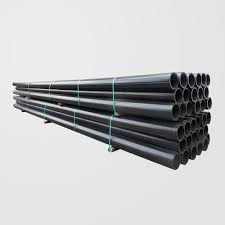Dec . 19, 2024 23:43 Back to list
Exploring the Features and Benefits of DN500 Service Options
Understanding DN500 Service A Comprehensive Overview
In the realm of industrial pipelines, DN500 service stands out as a crucial aspect for ensuring seamless operation in various sectors, including oil and gas, water supply, and chemical industries. DN, or Diameter Nominal, is a standard measurement used in pipe sizing that helps engineers and technicians identify the significant dimensions of pipes and fittings. In particular, DN500 represents a pipe with a nominal diameter of 500 millimeters.
Importance of DN500 in Industrial Applications
The DN500 pipe size is integral to the effective transport of fluids and gases. Its large diameter enables the movement of substantial volumes, making it suitable for high-capacity applications. For instance, in the oil and gas sector, DN500 pipes are often utilized in the transportation of crude oil, natural gas, and other hydrocarbons from extraction points to processing facilities. In the water supply industry, they can manage large quantities of water, ensuring efficient distribution to urban and rural areas.
Key Specifications and Materials
Pipes of DN500 size come in various specifications and materials, each tailored to specific applications. Common materials include carbon steel, stainless steel, and polyvinyl chloride (PVC). Carbon steel is widely preferred for its strength and durability, particularly in high-pressure environments. Stainless steel, while more expensive, offers resistance to corrosion and is suitable for applications involving aggressive chemicals. PVC pipes are lightweight and resistant to corrosion, making them ideal for certain water and sewage applications.
Understanding the pressure ratings of DN500 pipes is also crucial. Depending on the wall thickness and the material used, DN500 pipes can handle different pressure levels, which is essential for ensuring safety and reliability in operations. For example, a standard DN500 carbon steel pipe may have pressure ratings ranging from 10 to 40 bar, depending on its schedule (thickness).
Installation and Maintenance Considerations
dn500 service

The installation of DN500 pipelines requires careful planning and execution. Proper trenching, alignment, and support systems are essential to ensure the integrity of the pipeline over its service life. Establishing a well-defined installation procedure helps mitigate risks related to soil settlement, thermal expansion, and other environmental factors that could affect the pipeline.
Maintenance is equally crucial for DN500 service. Regular inspections and monitoring help identify potential leaks, corrosion, and other issues before they escalate into significant failures. Using advanced technologies such as ultrasonic testing or robotic inspection tools enhances the ability to maintain the integrity of these large-diameter pipes.
Challenges and Solutions in DN500 Service
While DN500 service offers numerous advantages, it is not without challenges. One primary concern is the susceptibility of large-diameter pipes to corrosion, particularly in harsh environments. Implementing protective coatings and cathodic protection systems can significantly enhance the lifespan of DN500 piping systems.
Additionally, sedimentation and blockages can occur within DN500 pipes, leading to reduced flow rates and operational efficiency. Regular cleaning and the use of flow monitoring technologies can help mitigate these issues, ensuring optimal performance.
Future Trends in DN500 Service
As industries continue to evolve, the demand for DN500 service is likely to increase. Innovations in materials science, such as the development of corrosion-resistant alloys and composite materials, will contribute to more durable and efficient pipeline systems. Moreover, the integration of smart technologies, including IoT sensors and AI-driven analytics, will revolutionize how these pipelines are monitored and maintained.
In conclusion, DN500 service plays a vital role in the efficient transport of fluids and gases across various industrial sectors. Understanding its specifications, installation, maintenance, challenges, and future trends is essential for engineers and professionals involved in pipeline management. As technology continues to advance, the potential for improving DN500 service further enhances its critical importance in modern infrastructure development.
-
High-Quality PVC Borehole Pipes Durable & Versatile Pipe Solutions
NewsJul.08,2025
-
High-Quality PVC Perforated Pipes for Efficient Drainage Leading Manufacturers & Factories
NewsJul.08,2025
-
High-Quality PVC Borehole Pipes Durable Pipe Solutions by Leading Manufacturer
NewsJul.08,2025
-
High-Quality PVC Borehole Pipes Reliable PVC Pipe Manufacturer Solutions
NewsJul.07,2025
-
High-Quality UPVC Drain Pipes Durable HDPE & Drain Pipe Solutions
NewsJul.07,2025
-
High-Quality Conduit Pipes & HDPE Conduit Fittings Manufacturer Reliable Factory Supply
NewsJul.06,2025

